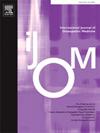Lessons learned from the digital transformation of physiotherapy education: A phenomenological study
IF 1.5
4区 医学
Q2 MEDICINE, GENERAL & INTERNAL
引用次数: 0
Abstract
Objective
The Covid-19 pandemic changed education globally with a rapid reduction of in-person learning and increase in e-learning. This was challenging for students with themes of poorer motivation, reduced engagement, and difficulty translating knowledge into practical skills. Although Covid-19 restrictions have been removed in the UK, increased e-learning is likely to be permanently integrated in healthcare programmes by most UK universities. Therefore, programmes need to evaluate their e-learning to learn lessons for the future. This study aimed to understand physiotherapy students’ experiences of e-learning and what, if any, specific topics were more challenging and why they felt this was the case to identify how e-learning can be developed to meet their needs.
Methods
A descriptive phenomenological methodology and purposive sampling of physiotherapy students at a UK university was used. Two semi-structured focus groups were conducted, data was analysed using reflexive thematic analysis.
Results
Four themes were constructed which were: connected but disconnected; collaborative disengagement; practicality for professional identity; and disembodiment with anatomy.
Conclusions
For vocational healthcare courses with substantial practical skill development required to meet regulatory standards, the balance of online and in-person learning will continue to be a challenge. The changes to education delivery which occurred because of the Covid-19 pandemic have provided educators with an opportunity to reflect on the challenges facing both students and the profession itself in this increasingly online world. Recommendations from this study include integrating online communication skills within the curriculum, prioritising digital skills, and embracing emerging immersive technologies to enhance anatomy learning.
Implications for educational practice
- •The balance of online and in-person learning for professional healthcare programmes is challenging
- •Curriculums should include development of online communication skills to support students learning experience in the online classroom and to develop the skills required for the future workplace
- •Digital skill development should be integrated into programmes to reflect the changing professional climate of healthcare
- •MSK programmes using online anatomy learning needs to include embodied experiences with sensory-motor activities to support deep learning of the topic, digital tools such as iVR may be appropriate to support this
物理治疗教育数字化转型的经验教训:现象学研究
目的2019冠状病毒病大流行改变了全球教育,现场学习迅速减少,网络学习增加。这对那些动机较差、参与度较低、难以将知识转化为实践技能的学生来说是一个挑战。尽管英国已经取消了对Covid-19的限制,但大多数英国大学可能会将增加的电子学习永久地纳入医疗保健课程。因此,各项目需要评估其电子学习,为未来吸取教训。本研究旨在了解物理治疗学生对电子学习的体验,以及如果有的话,哪些特定的主题更具挑战性,以及为什么他们认为情况是这样,以确定如何开发电子学习以满足他们的需求。方法采用描述性现象学方法,对英国一所大学理疗专业的学生进行有目的的抽样调查。进行了两个半结构化的焦点小组,使用反身性主题分析对数据进行了分析。结果构建了4个主题:连通但不连通;协作脱离;职业认同的实用性;和解剖分离。结论对于需要大量实践技能发展以满足监管标准的职业卫生保健课程,在线和面对面学习的平衡将继续是一个挑战。Covid-19大流行导致的教育提供方式的变化为教育工作者提供了一个机会,让他们反思在这个日益网络化的世界中,学生和职业本身所面临的挑战。该研究的建议包括将在线交流技能纳入课程,优先考虑数字技能,以及采用新兴的沉浸式技术来加强解剖学学习。对教育实践的影响•专业医疗保健课程在线和面对面学习的平衡具有挑战性•课程应包括在线沟通技能的发展,以支持学生在在线课堂上学习经验,并培养未来工作场所所需的技能•数字技能发展应纳入课程,以反映医疗保健专业环境的变化•MSK课程使用在线解剖学学习需要包含感官运动活动的具体体验来支持主题的深度学习,数字工具如iVR可能适合支持这一点
本文章由计算机程序翻译,如有差异,请以英文原文为准。
求助全文
约1分钟内获得全文
求助全文
来源期刊
CiteScore
2.20
自引率
36.80%
发文量
42
审稿时长
3 months
期刊介绍:
The International Journal of Osteopathic Medicine is a peer-reviewed journal that provides for the publication of high quality research articles and review papers that are as broad as the many disciplines that influence and underpin the principles and practice of osteopathic medicine. Particular emphasis is given to basic science research, clinical epidemiology and health social science in relation to osteopathy and neuromusculoskeletal medicine.
The Editorial Board encourages submission of articles based on both quantitative and qualitative research designs. The Editorial Board also aims to provide a forum for discourse and debate on any aspect of osteopathy and neuromusculoskeletal medicine with the aim of critically evaluating existing practices in regard to the diagnosis, treatment and management of patients with neuromusculoskeletal disorders and somatic dysfunction. All manuscripts submitted to the IJOM are subject to a blinded review process. The categories currently available for publication include reports of original research, review papers, commentaries and articles related to clinical practice, including case reports. Further details can be found in the IJOM Instructions for Authors. Manuscripts are accepted for publication with the understanding that no substantial part has been, or will be published elsewhere.

 求助内容:
求助内容: 应助结果提醒方式:
应助结果提醒方式:


